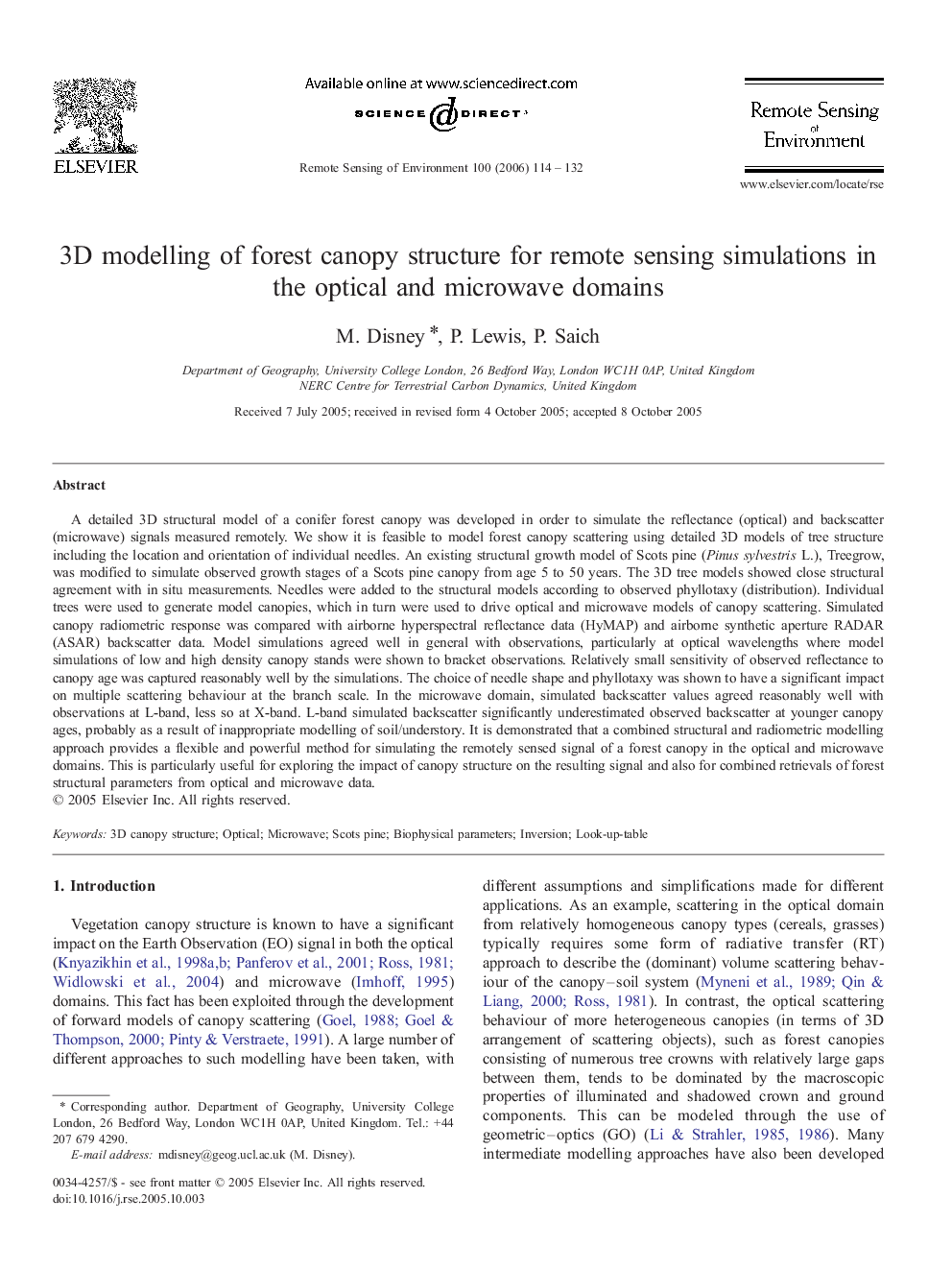| کد مقاله | کد نشریه | سال انتشار | مقاله انگلیسی | نسخه تمام متن |
|---|---|---|---|---|
| 4461211 | 1621377 | 2006 | 19 صفحه PDF | دانلود رایگان |

A detailed 3D structural model of a conifer forest canopy was developed in order to simulate the reflectance (optical) and backscatter (microwave) signals measured remotely. We show it is feasible to model forest canopy scattering using detailed 3D models of tree structure including the location and orientation of individual needles. An existing structural growth model of Scots pine (Pinus sylvestris L.), Treegrow, was modified to simulate observed growth stages of a Scots pine canopy from age 5 to 50 years. The 3D tree models showed close structural agreement with in situ measurements. Needles were added to the structural models according to observed phyllotaxy (distribution). Individual trees were used to generate model canopies, which in turn were used to drive optical and microwave models of canopy scattering. Simulated canopy radiometric response was compared with airborne hyperspectral reflectance data (HyMAP) and airborne synthetic aperture RADAR (ASAR) backscatter data. Model simulations agreed well in general with observations, particularly at optical wavelengths where model simulations of low and high density canopy stands were shown to bracket observations. Relatively small sensitivity of observed reflectance to canopy age was captured reasonably well by the simulations. The choice of needle shape and phyllotaxy was shown to have a significant impact on multiple scattering behaviour at the branch scale. In the microwave domain, simulated backscatter values agreed reasonably well with observations at L-band, less so at X-band. L-band simulated backscatter significantly underestimated observed backscatter at younger canopy ages, probably as a result of inappropriate modelling of soil/understory. It is demonstrated that a combined structural and radiometric modelling approach provides a flexible and powerful method for simulating the remotely sensed signal of a forest canopy in the optical and microwave domains. This is particularly useful for exploring the impact of canopy structure on the resulting signal and also for combined retrievals of forest structural parameters from optical and microwave data.
Journal: Remote Sensing of Environment - Volume 100, Issue 1, 15 January 2006, Pages 114–132